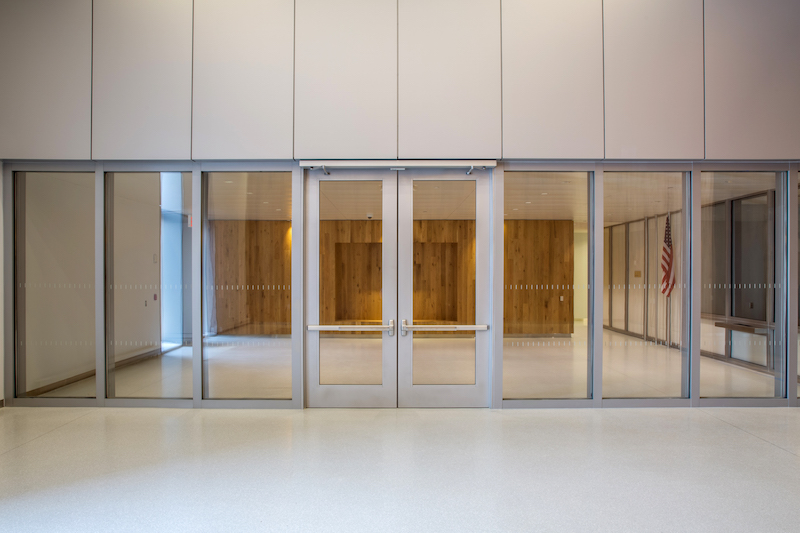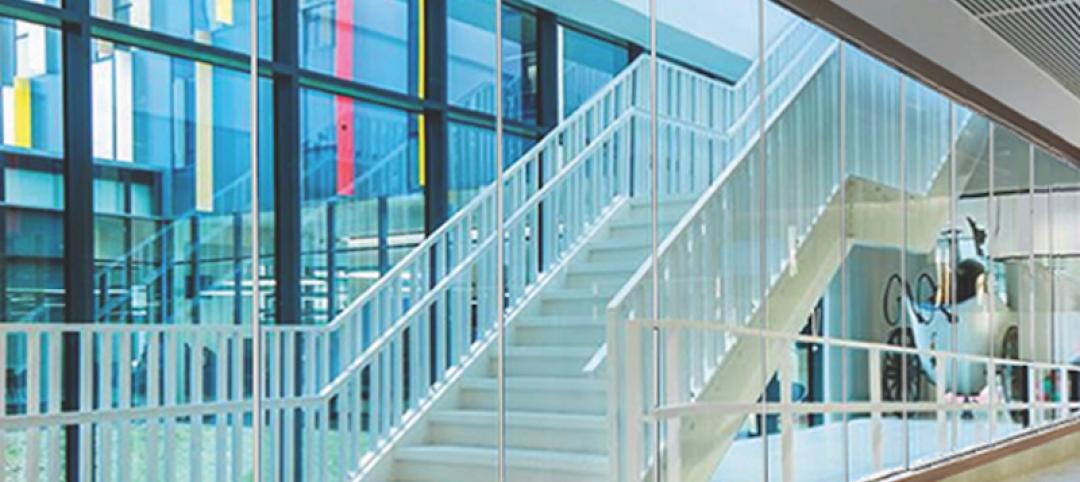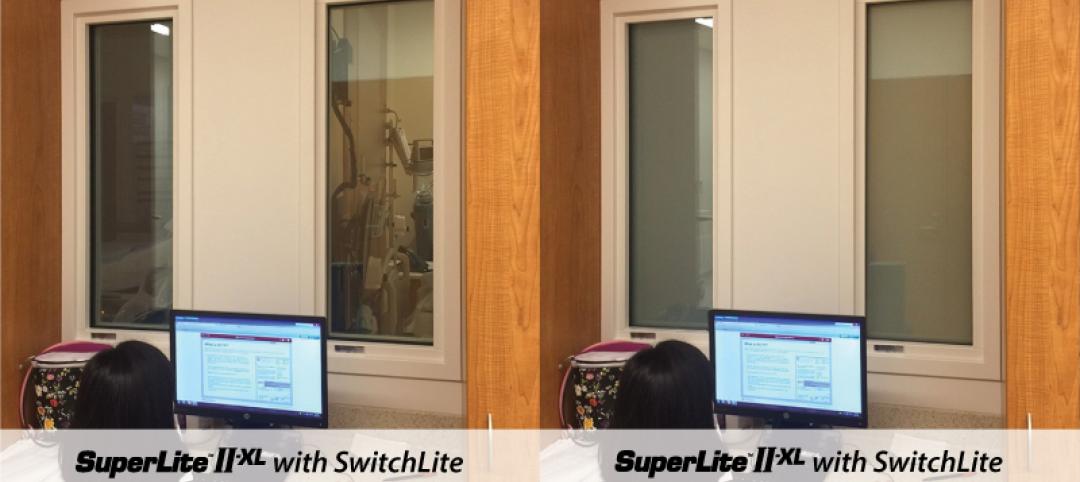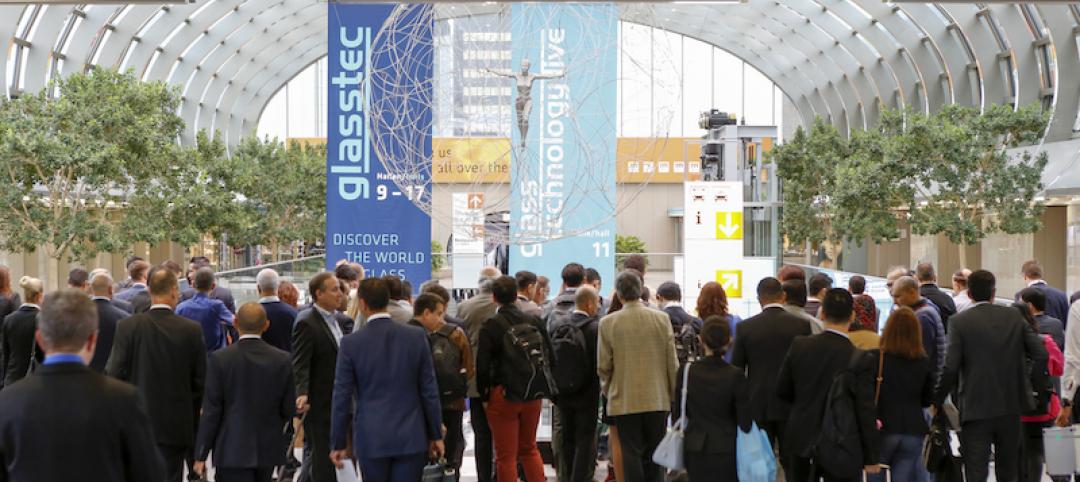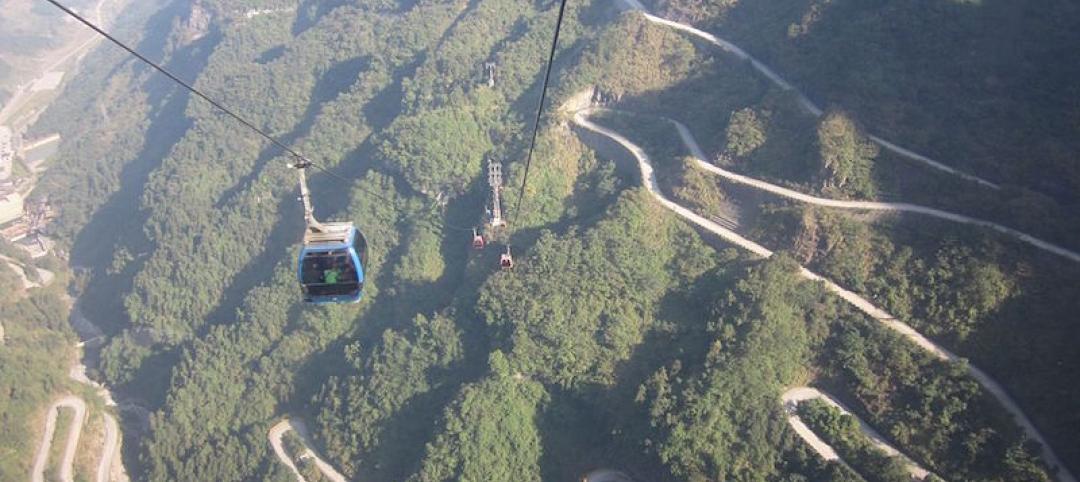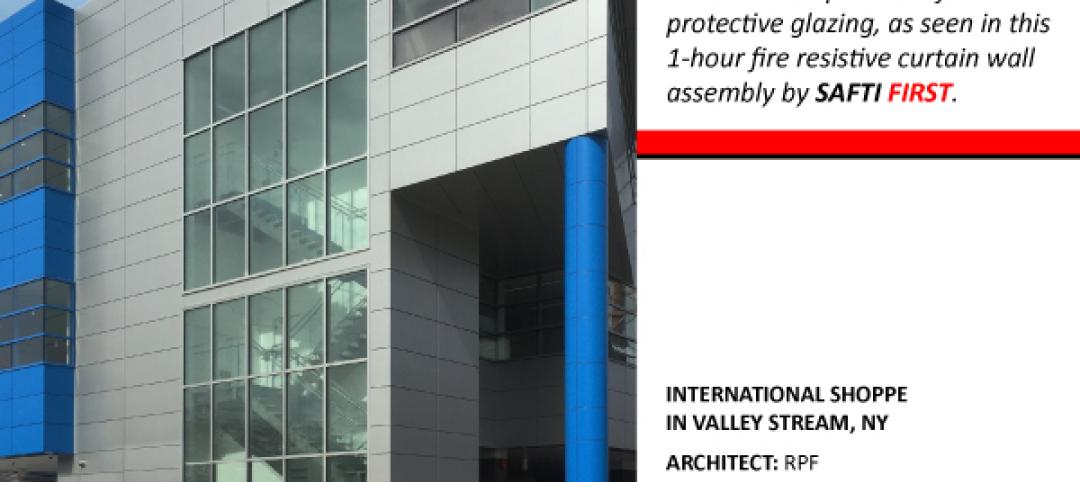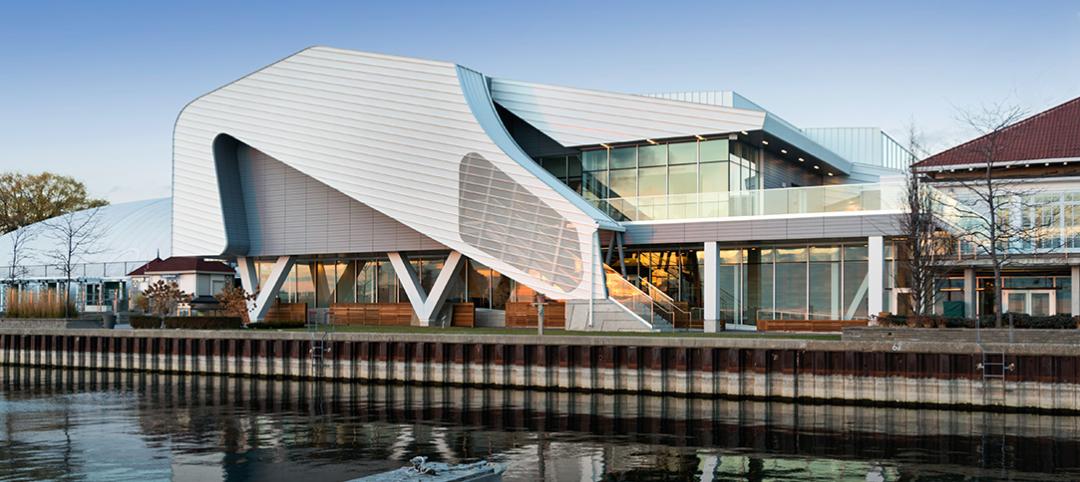Project: Public Safety Facility in the East Coast
Architect: Skidmore Owings & Merrill
Glazing Contractor: W&W, LLC
Blast Consultant: Weidlinger Associates
Products: Fire Resistive/Blast Rated System with SuperLite II-XL 120 in GPX Blast Framing and Fire Resistive/Ballistic Rated System with SuperLite II-XL 120 in GPX Ballistic Framing.
A building’s design is very much influenced by the function it performs and the perceived threats that it may face – whether it’s from natural disasters, accidents or terrorist attacks – with the latter being a foremost concern for federal courthouses, embassies, government facilities and other high profile buildings. For these types of facilities, building materials are chosen based on their ability to mitigate or minimize the injuries and fatalities to occupants during an attack. Because of these security concerns, trade-offs have been made when it comes to daylighting, energy efficiency and aesthetics to name a few. The good news is that today, high-performance security glazing make-ups are available in the market place to meet the level of protection needed while continuing to provide natural light and a feeling of openness. These specialized systems can also blend with the surroundings seamlessly to enhance the building’s overall design.
The 1995 bombing of the A.P. Murrah Federal Building in Oklahoma City revealed the devastating effects of high velocity glass fragments on people in the building or those in the vicinity when a blast occurs. This prompted the General Services Administration (GSA) to establish a blast criteria for all glazing used in federal buildings, which was later on adopted by the Interagency Security Committee (ISC) to broaden its use. Part of its approach is to quantify glass failure not in terms of whether breakage occurs, but rather the hazard it causes to occupants. Today, the ISC Security Design Criteria Blast Protection Levels for Windows is the most widely recognized classification of design levels for glazing hazard protection:
|
Performance Condition |
Protection Level |
Hazard Level |
Description of Window Glazing Response |
|
1 |
Safe |
None |
Glazing does not break. No visible damage to glazing or frame. |
|
2 |
Very High |
None |
Glazing cracks but is retained by the frame. Dusting or very small fragments near the sill or floor acceptable. |
|
3a |
High |
Very Low |
Glazing cracks. Fragments enter space and land on floor no further than 3.3 ft. from the window. |
|
3b |
High |
Low |
Glazing cracks. Fragments enter space and land on floor no further than 10 ft. from the window. |
|
4 |
Medium |
Medium |
Glazing cracks. Fragments enter space and land on floor and impact a vertical witness panel at a distance of no more than 10 ft. from the window at a height no greater than 2 ft. above the floor. |
|
5 |
Low |
High |
Glazing cracks and window system fails catastrophically. Fragments enter space and land on floor and impact a vertical witness panel at a distance of no more than 10 ft. from the window at a height greater than 2 ft. above the floor. |
But what happens when the same blast rated glazing system must also meet 2-hour fire resistive requirements, as well as deliver maximum transparency and seamlessly blend with the existing non-rated systems?
Such was the case with a public safety facility located in the east coast of the United States. The glass wall between the secure entrance and main lobby had to meet both ASTM E-119/NFPA 251 for 2 hours with hose stream as well as Performance Condition 2 of the ISC Security Design Criteria Blast Protection Levels for Windows. Additionally, the assembly had to meet the requirements in UFC 3-340-02, Structures to Resist the Effects of Accidental Explosions, UFC 4-020-01, Department of Defense Security Engineering Facilities Planning Manual and UFC 4-010-01, Department of Defense Minimum Anti-Terrorism Standards for Buildings. There was also an adjacent glass wall by the security officer’s desk that had to meet ASTM E-119/NFPA 251 for 2 hours and UL 752 Level 4 Ballistic.
Given the strict requirements of this project, SAFTI FIRST submitted a certified blast engineering report to the building team for the fire resistive, blast rated system, as well as provide a visual mock-up of the assembly. To achieve the level of fire and blast resistance needed, SAFTI FIRST provided SuperLite II-XL 120 with Heat Strengthened Laminated Glass that met the Performance 2 criteria. It was supplied with the GPX Blast Framing System with a custom designed anchoring system. SAFTI FIRST worked with the design team and blast consultant to ensure that the entire assembly worked with the surrounding structure to meet the required blast performance.
For the fire and ballistic rated system, SAFTI FIRST provided SuperLite II-XL 120 with Level 4 Ballistic Glazing. Some of these panels included an obscure spandrel for areas that needed additional privacy. It was supplied with the GPX Ballistic Framing System to ensure that the entire assembly was compliant.
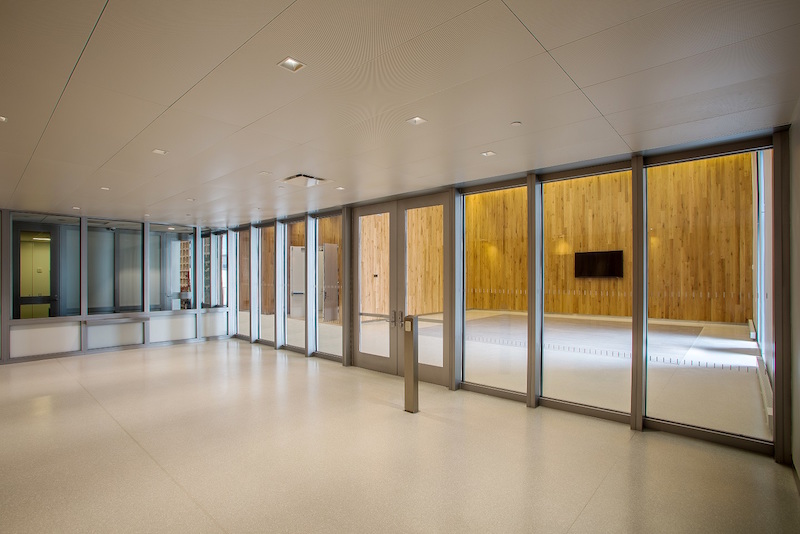
Since maximum transparency and vision were important design requirements, all the SuperLite II-XL fire resistive blast and fire resistive ballistic glazed assemblies utilized Starphire Low-Iron glass for an ultra-clear appearance despite the robust glass make-up. The GPX Blast and GPX Ballistic Framing systems matched the clean, sharp sightlines and finish of the non-rated systems for a uniform look. Both framing systems were supplied pre-welded and pre-assembled in sections for ease of installation.
The building also benefited from SuperLite II-XL 120’s large clear view areas, with individual panels just under 4,876 sq. inches, which is SuperLite II-XL 120’s maximum clear view area and the largest available at that time (SAFTI FIRST’s SuperLite II-XLB product currently has a largest clear view area at 7,980 square inches).
SAFTI FIRST also provided the large, 10-foot, 90 minute fire resistive pair doors in the glazed assembly. They were supplied with custom hardware that was compatible with the specified card reader to ensure secure access to the building.
The result is a beautiful and elegant glass wall and entrance system that greets building occupants as they enter and leave the facility during work hours, and would protect them from fire, blast or ballistic threats should it occur.
References:
Eve Hinman, P.E. “Blast Safety of the Building Envelope,” Whole Building Design Guide, (October 19, 2011).
Joseph L. Smith, P.S.P. and Nancy A. Renfroe, P.S.P., “Glazing Hazard Mitigation,” Whole Building Design Guide (July 23, 2010).
Related Stories
Sponsored | Fire-Rated Products | Nov 10, 2016
Truly transparent: Fire resistive butt-glazed walls up to 2 hours
SuperLite II-XLM is a fire resistive multi-laminate glass product that meets ASTM E-119/UL 263/NFPA 251 and CAN/ULC S101 up to 2 hours.
Sponsored | Fire-Rated Products | Nov 3, 2016
Fire rated switchable glass provides privacy and fire protection at the University of Chicago Medical Center
The University of Chicago Hospital Group reached out to Bill Zientarski of Hi-Performance Glazing Solutions and SAFTI FIRST’s architectural representative in Illinois for a solution that combined vision, privacy and fire protection in one glazed unit.
Sponsored | Glass and Glazing | Oct 14, 2016
International glazing community celebrates innovation at the Glasstec show in Dusseldof
With 9 exhibition halls showcasing over 1,235 exhibitors from 52 countries and with over 40,000 visitors from 100 countries walking the show, it is still regarded as the leading international trade fair for the glass industry.
Glass and Glazing | Aug 22, 2016
Tianmen Mountain glass skywalk opens to the public
Acrophobics beware: China’s Zhangjiajie National Forest Park just got a little bit (or a lot) more terrifying.
Sponsored | Glass and Glazing | Mar 31, 2016
Unlimited? Not When it Comes to Fire Rated Glass
Code limitations do not match manufacturer’s tested listings
Energy-Efficient Design | Feb 18, 2016
How to make a ‘pure’ glass sphere
Creating a 25-story energy-generating globe for Expo 2017 in Kazakhstan put Adrian Smith + Gordon Gill Architecture to the test.
Sponsored | Glass and Glazing | Feb 8, 2016
The State of the Fire Rated Glass Industry
After a strong 2015, demand for fire resistive glass continues to grow
Sponsored | Glass and Glazing | Jan 27, 2016
Saving Energy & Birds at the Boulevard Club
The Boulevard Club is a century old structure in Toronto which needed an expansion. The windows facing Lake Ontario needed to be bird friendly in order to reduce the number of window collisions. In this case, AviProtek E bird friendly low-e coated acid-etched glass was the right choice.
Sponsored | Glass and Glazing | Dec 11, 2015
Glass industry gives back during the holidays
The holiday season is generally a time when individuals and companies ramp up their charitable giving. The glass industry is no different.


